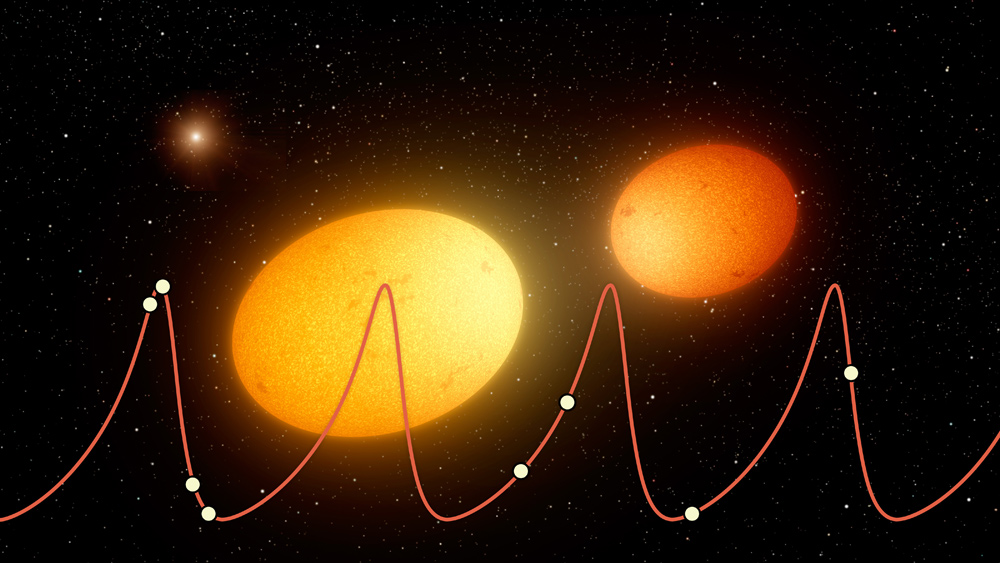19 'Heartbeat' Stars Mapped — Most Ever in Single Study

Scientists recently characterized 19 "heartbeat" star systems — pairs of binary stars that vary in brightness over time, creating a brightness curve that blips up and down like an electrocardiogram.
This is the largest group of heartbeat stars mapped in a single study, NASA officials said in a statement.
Avi Shporer, a currently a researcher at California Institute of Technology and lead author of the study, used NASA's Kepler space telescope to discover the stars. The Kepler telescope has found several heartbeat star systems in the past few years: A 2011 study discovered a star called KOI-54 that shows an increase in brightness every 41.8 days, and in 2012, scientists characterized 17 other heartbeat stars using the telescope.
Heartbeat stars let scientists study stars' gravitational effects on one another. The distance between the two stars in a heartbeat star system varies greatly and can be as small as a few stellar radii between the two or 10 times larger over the course of one orbit, according to NASA.
At their closest point, the gravitational pull between the stars tugs them into slightly ellipsoidal shapes, which is one reason their light varies so much. That tidal force, which is the same type that causes ocean tides on Earth, can also cause the stars in a heartbeat system to vibrate, according to NASA.
"You can think about the stars as bells, and once every orbital revolution, when the stars reach their closest approach, it's as if they hit each other with a hammer," Shporer said in the statement.
At their closest point in orbit, the stars' diameters fluctuate rapidly, causing the "ringing" effect, NASA officials said in a statement.
Breaking space news, the latest updates on rocket launches, skywatching events and more!
Scientists are still uncertain of heartbeat star systems' structure, and they think some systems may have a third, or even a fourth, star. "All the tidal stretching of these heartbeat stars should have quickly caused the system to evolve into a circular orbit," study co-author Susan Mullally, a scientist with the SETI Institute who's working on the Kepler mission, said in the statement. "A third star in the system is one way to create the highly stretched-out, elliptical orbits we observe."
The researchers are currently pursuing follow-up studies to search for a third-star component in the heartbeat systems.
Follow Kasandra Brabaw on Twitter @KassieBrabaw. Follow us @Spacedotcom, Facebook and Google+. Original article on Space.com.

Kasandra Brabaw is a freelance science writer who covers space, health, and psychology. She's been writing for Space.com since 2014, covering NASA events, sci-fi entertainment, and space news. In addition to Space.com, Kasandra has written for Prevention, Women's Health, SELF, and other health publications. She has also worked with academics to edit books written for popular audiences.
